The Hottest Chilies In The World
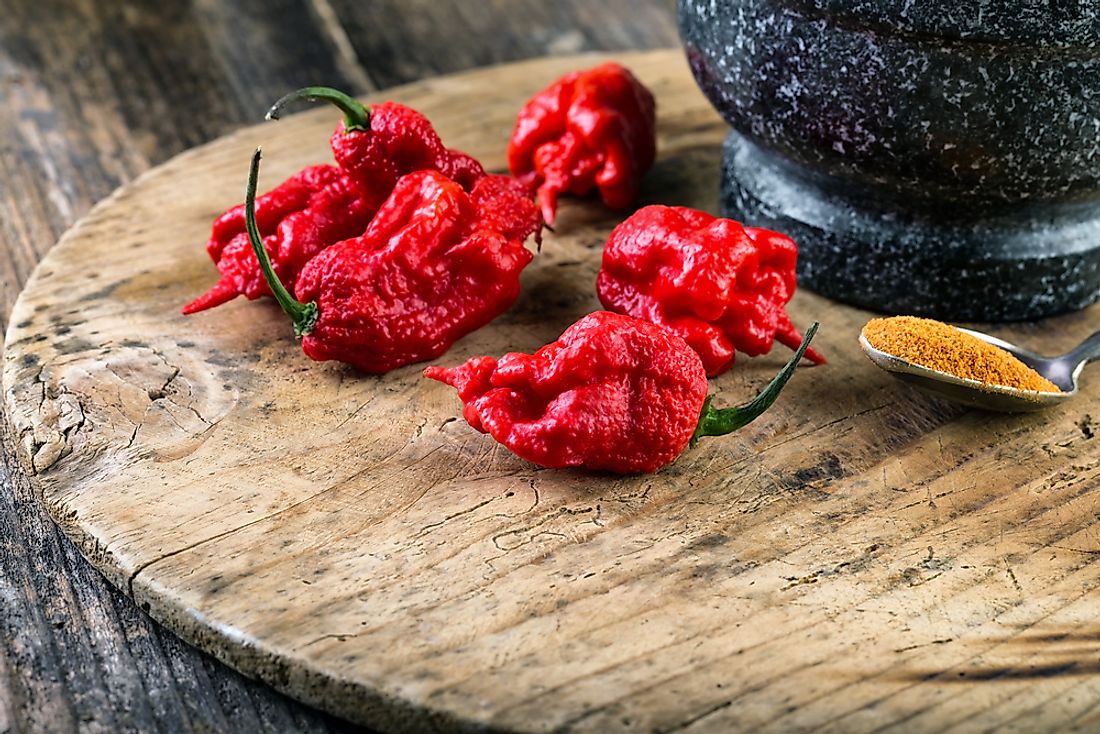
- Chilies can come in various degrees of heat intensity, which is measured on what is called the Scoville Heat Unit scale.
- The world's hottest chili can change from year to year as farmers continue to experiment with ways to create newer, hotter chilies.
- The Carolina Reaper was named the world's hottest chili in 2013.
Chilies come in various sizes, colors, and shapes as well as varying levels of pungency, which makes classification a daunting undertaking for an amateur botanist. There are 25 recognized wild varieties and between 2,000 to 3,000 cultivars grown across the world. Chilies get their kick from the phytonutrient called capsaicin which attaches to the taste bud TRPV1 receptors that detect scalding heat and send spicy heat signals to the brain. Chilies are ranked using the Scoville Heat Unit (SHU) scale which quantifies the level of heat units per unit of dry mass in pepper by measuring the concentration of capsaicinoids. The throne for the hottest chili has changed hands over the past decade with numerous farmers across the world experimenting with new practices and techniques meant to produce hotter and spicier chilies.
The Hottest Chilies In The World
Carolina Reaper
The Carolina Reaper is among the world’s hottest chilies. The mean-looking pepper was initially named the HP22B. The Carolina Reaper is gnarled and red with a tail that is small and pointed, and it is a cross between the Red Habanero and the Pakistani Naga. The pepper went into the Guinness World Records in 2013 for being the world hottest chili in the world after surpassing the Trinidad Scorpion. The pepper has an average SHU of 1.64 million with some peaking at almost 2.2 million SHU. The pepper is famed for the excellent fruity flavor that accompanies the heat of the pepper.
Naga Viper
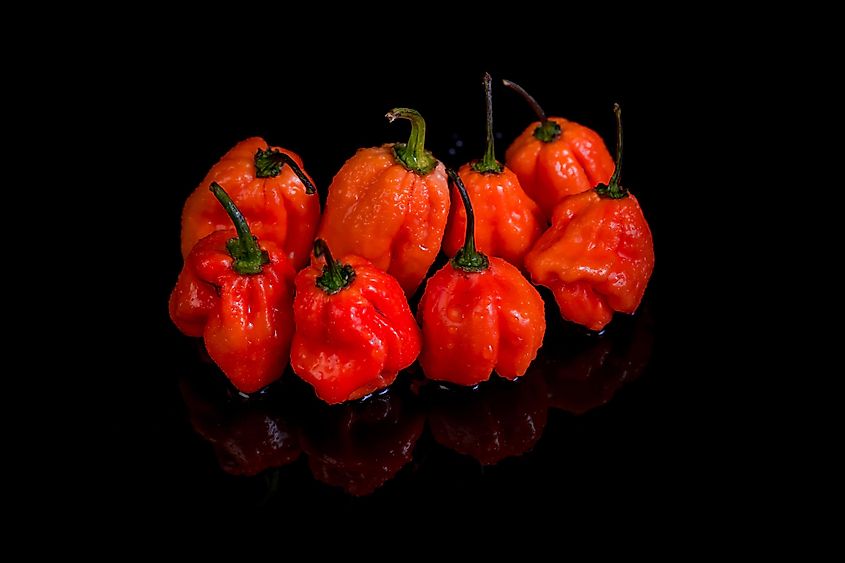
The Naga Viper boasts of containing about 900,000 to 1.38 million SHU and is a cross between three hot chilies, namely the Naga Morich, ghost pepper, and the Trinidad Naga Morich. The pepper held the Guinness World Record for the hottest chili in the world in 2011 after beating the infinity pepper, but it lost the title the following year. The pepper has the slow burn of the ghost pepper and the heat of a scorpion pepper.
Trinidad Moruga Scorpion
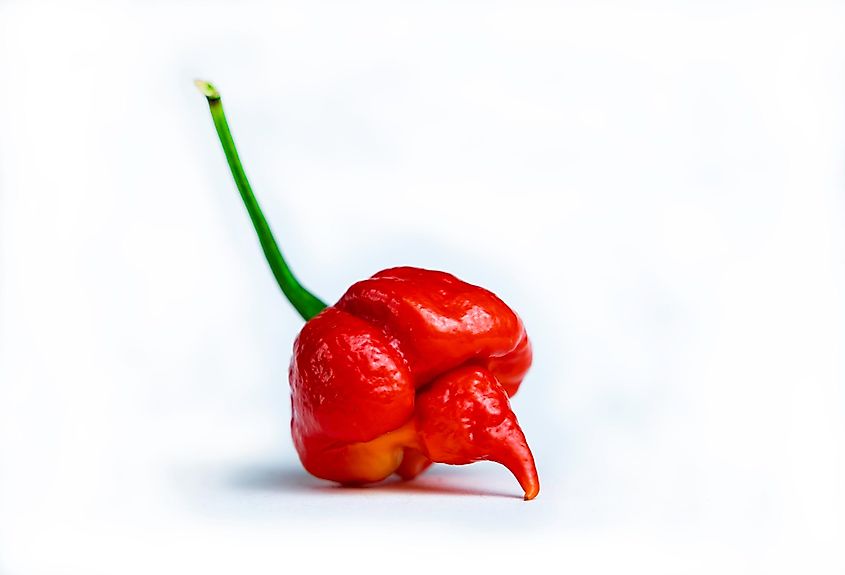
The Trinidad Moruga Scorpion contains about 1.2 to 2 million SHU. This variant of pepper initially from Trinidad and Tobago gets its name from its scorpion-like tail. Symptoms from eating one of these raw include hiccups, sweating, and numbness, and it is up to 800 times hotter than a jalapeño pepper.
7-Pot Habanero
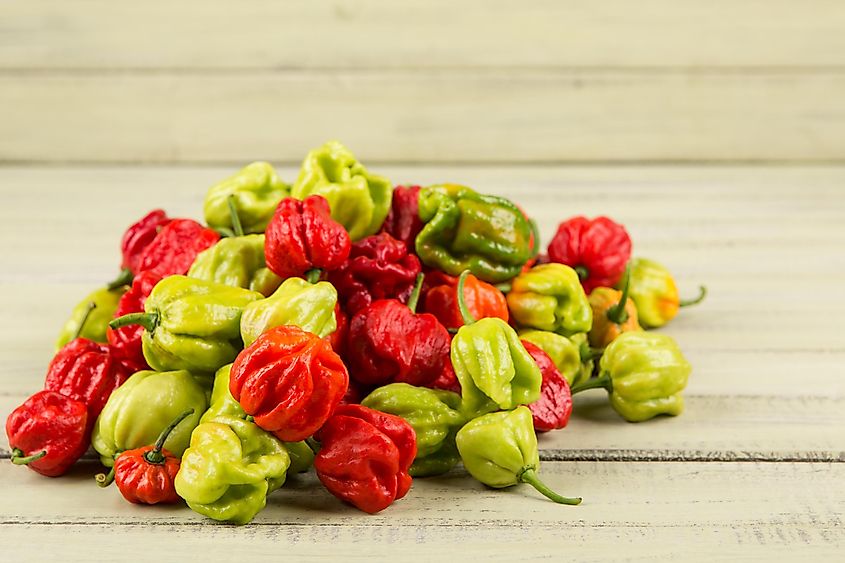
The 7-Pot Habanero contains 1 to 1.35 million SHU. The pepper is folded and round, sort of looking like a human brain. The 7-Pot Habanero gets its name from the fact that the fierce spiciness from just one of these adds enough heat for seven family-size cooking pots of food. It is purported to taste fruity, tropical and a little nutty, once you get past the heat.
Dorset Naga
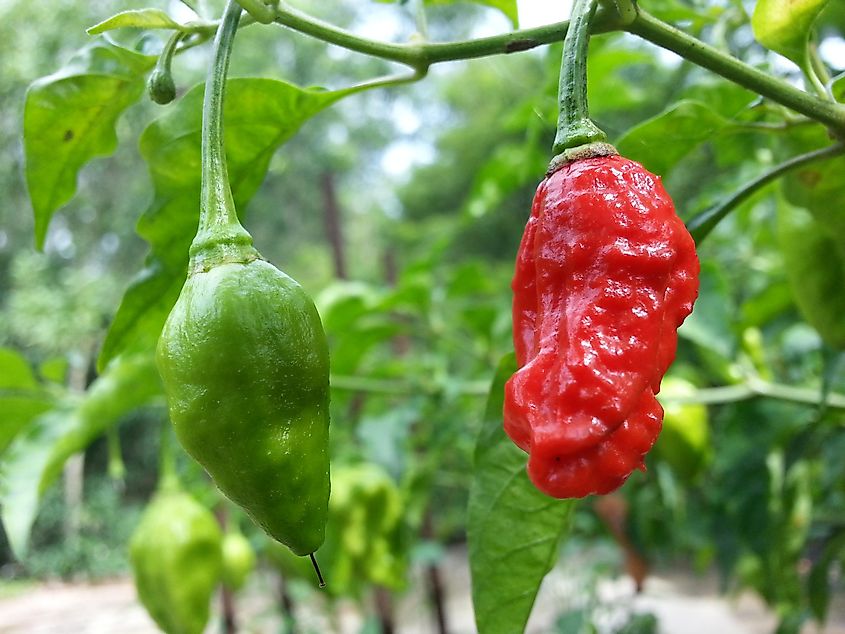
The Dorset Naga contains 1 to 1.6 SHU. The chili is originally from the United Kingdom and is a subspecies of the Naga Morich. It was created by Joy and Michael Michaud of Dorset, England by handpicking only the best seeds of the Naga Morich and growing them exclusively, continuing this process over the course of a few years, thus creating the Dorset Naga. The pepper is so popular in the UK due to the heated flavor it adds to food.
Chocolate Habalokia
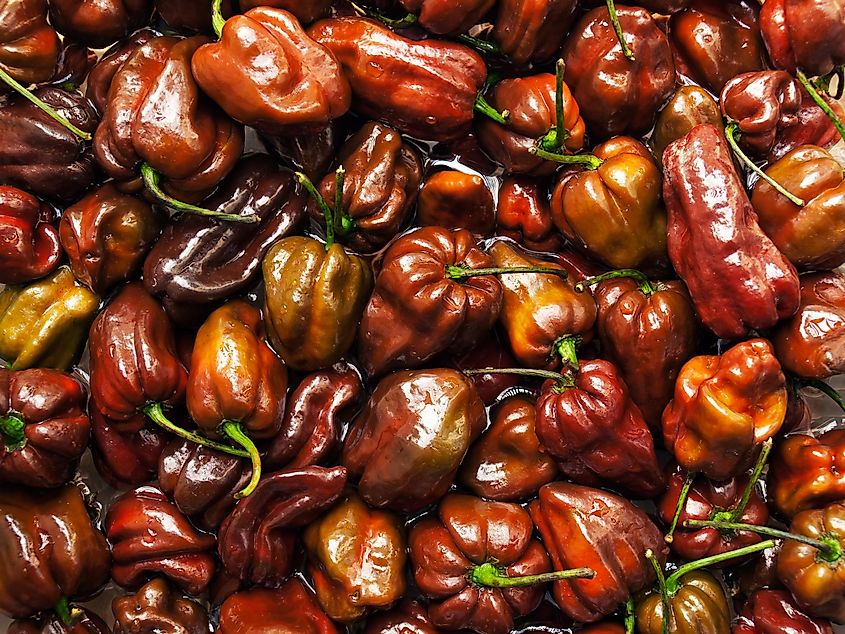
The Chocolate Habalokia is a cross between a Bhut Jolokia and the Chocolate Habanero. The chili matures from green to a chocolatey color and contains an impressive 800,000 SHU.
Peach Ghost Scorpion
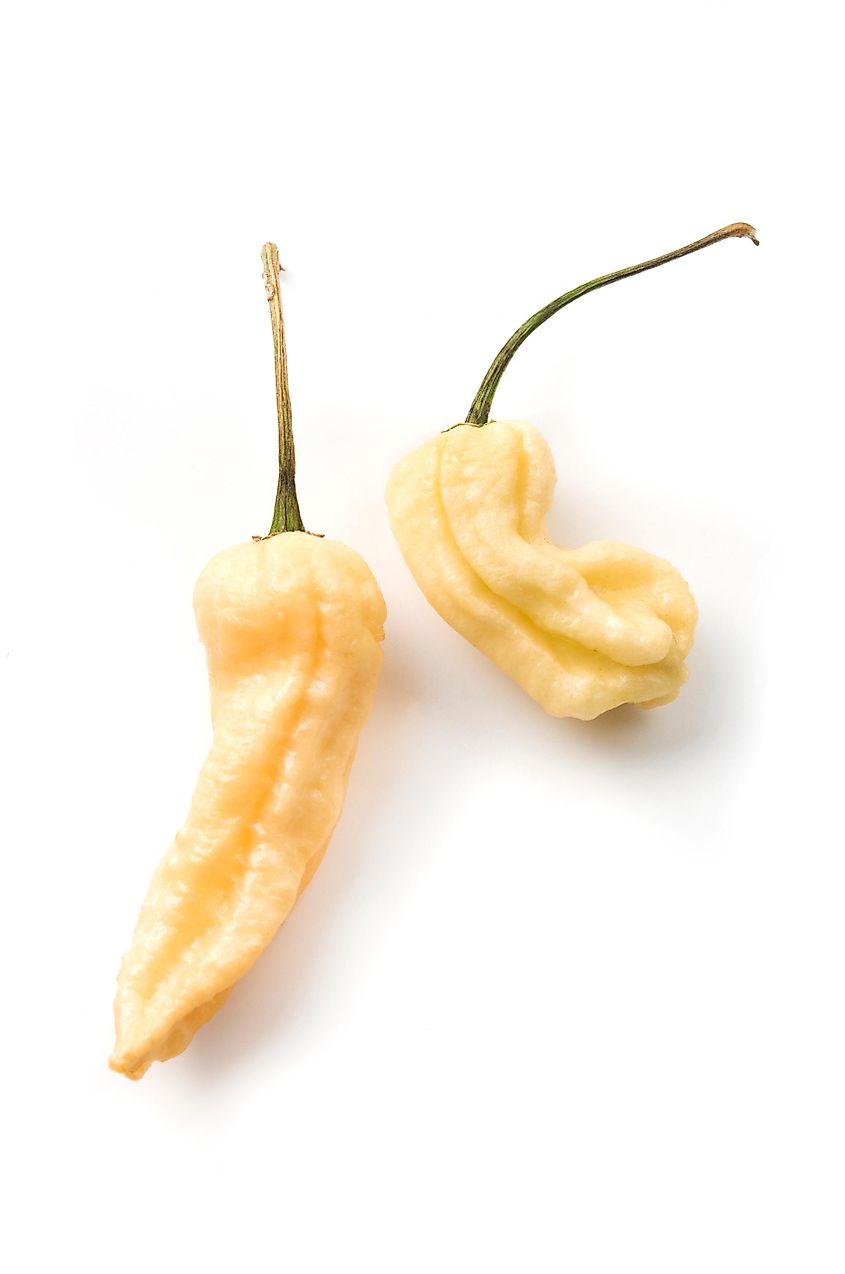
The Peach Ghost Scorpion packs over 750,000 SHU and is a cross between the Bhut Jolokia (also called Ghost Pepper) and the Trinidad Scorpion. The chili is known for its fruity taste that quickly changes to spicy and hot.
Health Benefits
Chilies have numerous health benefits, including helping blood circulation by thinning the blood, and preventing strokes to a significant degree. The capsaicin found in chilies is known to contain a Neuropeptide that is associated with anti-inflammatory properties that help control auto-inflammatory diseases such as arthritis and rheumatoid. Chilies are also effective in clearing congestion and nasal passages which helps one to breathe with more ease. Capsaicin also has heat-producing compounds which increase our metabolic rate by up to 23%, therefore is can help control body fat and obesity.











